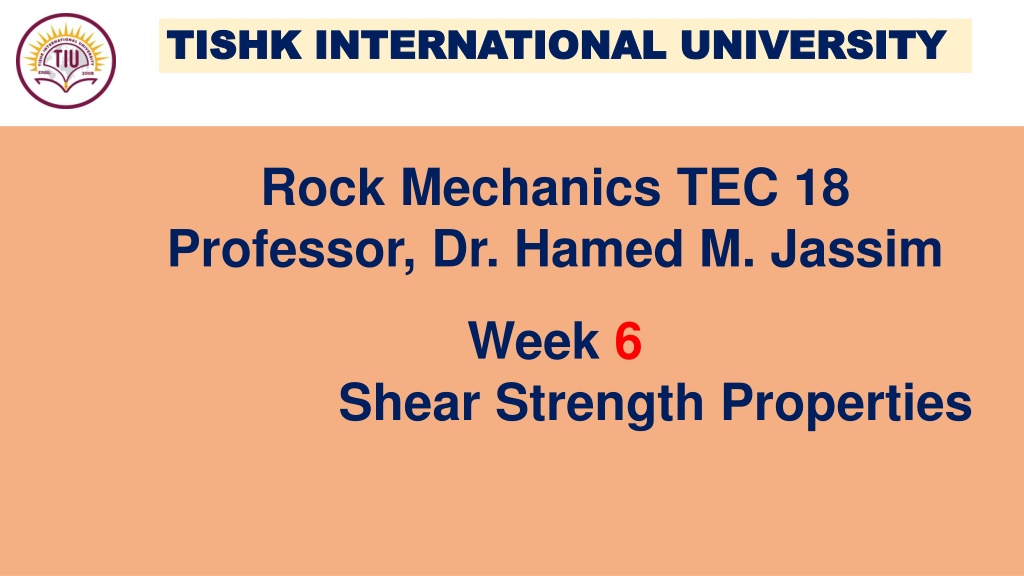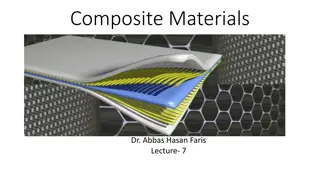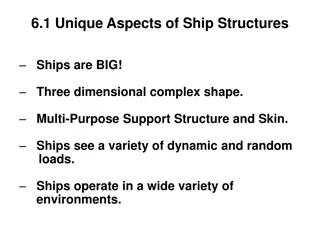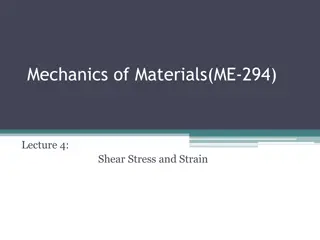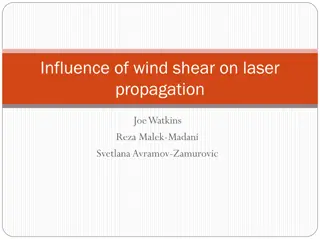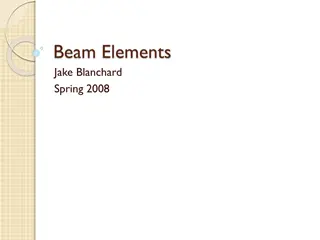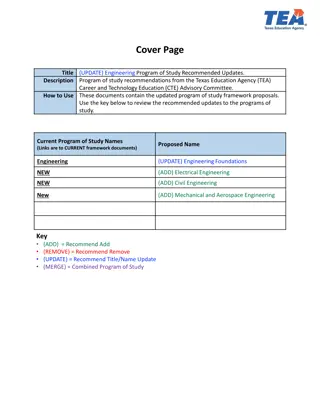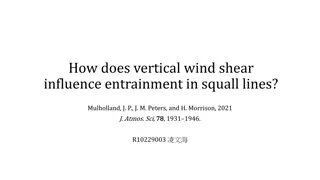Shear Strength in Engineering Materials
Shear strength is a crucial mechanical property that defines a material's ability to resist forces causing internal structure to slide. This property plays a significant role in various engineering fields, impacting design, construction, and material selection. Shear strength is essential in preventing structural failures and ensuring the durability of components.
Download Presentation

Please find below an Image/Link to download the presentation.
The content on the website is provided AS IS for your information and personal use only. It may not be sold, licensed, or shared on other websites without obtaining consent from the author.If you encounter any issues during the download, it is possible that the publisher has removed the file from their server.
You are allowed to download the files provided on this website for personal or commercial use, subject to the condition that they are used lawfully. All files are the property of their respective owners.
The content on the website is provided AS IS for your information and personal use only. It may not be sold, licensed, or shared on other websites without obtaining consent from the author.
E N D
Presentation Transcript
TISHK INTERNATIONAL UNIVERSITY TISHK INTERNATIONAL UNIVERSITY Rock Mechanics TEC 18 Professor, Dr. Hamed M. Jassim Week 6 Shear Strength Properties
TISHK INTERNATIONAL UNIVERSITY TISHK INTERNATIONAL UNIVERSITY Definition - What does Shear Strength mean? Shear strength is a material's ability to resist forces that can cause the internal structure of the material to slide against itself. Adhesives tend to have high shear strength.
TISHK INTERNATIONAL UNIVERSITY TISHK INTERNATIONAL UNIVERSITY Shear strength is the maximum shear stress which a material can withstand without rupture. It is the maximum load required to cut off a specimen in such a way that the resulting pieces are entirely clear of each other. It is thus the definitive strength of a material exposed to shear loading. This is experienced just before a material ruptures.
TISHK INTERNATIONAL UNIVERSITY TISHK INTERNATIONAL UNIVERSITY
TISHK INTERNATIONAL UNIVERSITY TISHK INTERNATIONAL UNIVERSITY In engineering, shear strength is the strength of a material or component against the type of yield orstructural failure when the material or component fails in shear. A shear load is a force that tends to produce a sliding failure on a material along a plane that is parallel to the direction of the force. When a paper is cut with scissors, the paper fails in shear.
TISHK INTERNATIONAL UNIVERSITY TISHK INTERNATIONAL UNIVERSITY
TISHK INTERNATIONAL UNIVERSITY TISHK INTERNATIONAL UNIVERSITY In structural and mechanical engineering, the shear strength of a component is important for designing the dimensions and materials to be used for the manufacture or construction of the component (e.g. beams, plates, or bolts). In a reinforced concrete beam, the main purpose of reinforcing bar stirrups is to increase the shear strength.
TISHK INTERNATIONAL UNIVERSITY TISHK INTERNATIONAL UNIVERSITY For shear stress (tau) applies = 1 3/ 2 where 1 is major principal stress and 3 is minor principal stress. In general: ductile materials (e.g. aluminum) fail in shear, whereas brittle materials (e.g. cast iron) fail in tension.
TISHK INTERNATIONAL UNIVERSITY TISHK INTERNATIONAL UNIVERSITY To calculate: Given total force at failure (F) and the force-resisting area (e.g. the cross-section of a bolt loaded in shear), ultimate shear strength ( ) is: = F / A = F / r2 = 4 F/ d 2 Where: A is the cross sectional area, r is the radius, d is the diameter
TISHK INTERNATIONAL UNIVERSITY TISHK INTERNATIONAL UNIVERSITY
TISHK INTERNATIONAL UNIVERSITY TISHK INTERNATIONAL UNIVERSITY Coulomb friction is a simplified quantification of the friction force that exists between two dry surfaces in contact with each other. All friction calculations are approximations, and this measurement, which was developed in 1785 by Charles- Augustin de Coulomb as a refinement of Leonardo da Vinci's classical model, is dependent only on the fundamental principles of motion.
TISHK INTERNATIONAL UNIVERSITY TISHK INTERNATIONAL UNIVERSITY It assumes that the contact surfaces are fairly uniform and that the coefficient of friction that must be overcome for motion to begin is well-established for the materials in contact. It also accounts for the normal force involving gravitational pull, whether in direct horizontal movement to the normal force or at a vectored incline.
TISHK INTERNATIONAL UNIVERSITY TISHK INTERNATIONAL UNIVERSITY
TISHK INTERNATIONAL UNIVERSITY TISHK INTERNATIONAL UNIVERSITY where p is peak shear strength c is cohesion n is the normal stress p is peak friction angle r is residual shear strength r is residual friction angle
TISHK INTERNATIONAL UNIVERSITY TISHK INTERNATIONAL UNIVERSITY
TISHK INTERNATIONAL UNIVERSITY TISHK INTERNATIONAL UNIVERSITY
TISHK INTERNATIONAL UNIVERSITY TISHK INTERNATIONAL UNIVERSITY
TISHK INTERNATIONAL UNIVERSITY TISHK INTERNATIONAL UNIVERSITY
TISHK INTERNATIONAL UNIVERSITY TISHK INTERNATIONAL UNIVERSITY
TISHK INTERNATIONAL UNIVERSITY TISHK INTERNATIONAL UNIVERSITY where ris residual shear strength nis the normal stress bis basic friction angle = r residual friction angle
TISHK INTERNATIONAL UNIVERSITY TISHK INTERNATIONAL UNIVERSITY
TISHK INTERNATIONAL UNIVERSITY TISHK INTERNATIONAL UNIVERSITY
TISHK INTERNATIONAL UNIVERSITY TISHK INTERNATIONAL UNIVERSITY Pore water pressure (sometimes abbreviated to pwp) refers to the pressure of groundwater held within a soil or rock, in gaps between particles (pores). Pore water pressures below the phreatic level of the groundwater are measured with piezometers. The vertical pore water pressure distribution in aquifers can generally be assumed to be close to hydrostatic.
TISHK INTERNATIONAL UNIVERSITY TISHK INTERNATIONAL UNIVERSITY
TISHK INTERNATIONAL UNIVERSITY TISHK INTERNATIONAL UNIVERSITY
TISHK INTERNATIONAL UNIVERSITY TISHK INTERNATIONAL UNIVERSITY
TISHK INTERNATIONAL UNIVERSITY TISHK INTERNATIONAL UNIVERSITY
TISHK INTERNATIONAL UNIVERSITY TISHK INTERNATIONAL UNIVERSITY
TISHK INTERNATIONAL UNIVERSITY TISHK INTERNATIONAL UNIVERSITY Joint Roughness Coefficient (JRC)
TISHK INTERNATIONAL UNIVERSITY TISHK INTERNATIONAL UNIVERSITY JCS= Joint Comp. Strength
TISHK INTERNATIONAL UNIVERSITY TISHK INTERNATIONAL UNIVERSITY
